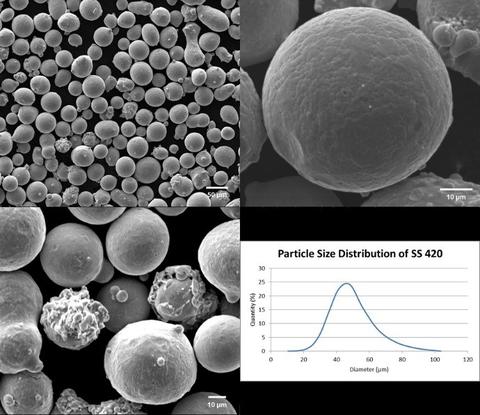Launching a Consortium for Additive Manufacturing Materials

Goal: Connect materials producers, research institutions, and end users to develop technologies needed for novel applications of new materials for additive manufacturing.
Background: Invented in the United States, additive manufacturing processes entail layer-by-layer deposition and fusing of materials to make three-dimensional objects directly from digital designs. These processes offer many advantages over traditional manufacturing methods, which involve removing material from workpieces.
Advantages of additive manufacturing are quick turnaround from design to part, limited need for complex tooling, cost-effective production of small lots, reduced waste, and design and manufacturing flexibility, which accommodates complex features and shapes that increase functionality.
While AM techniques are rapidly evolving, the field continues to rely on traditional materials which have not been designed or optimized for conditions experienced in additive manufacturing. New advanced metallic, polymer, ceramic, and related composite material systems are required to optimize additive manufacturing capabilities and their applications in a variety of industries.
Approach: To address this issue, Penn State University launched the Consortium for Additive Manufacturing Materials to develop an industry-led roadmap to drive materials innovation for additive manufacturing applications.
The consortium leveraged the resources, capabilities, and multidisciplinary expertise of Penn State's Center for Innovative Materials Processing through Direct Digital Deposition and its Center for Computational Materials Design.
The roadmap’s focus was on developing new types of metals, polymers, and ceramics expressly designed for additive manufacturing uses in the aerospace, biomedical, energy, and electronics industries. The roadmapping effort involved more than 120 participants from industry, government, and academia.
Outcome: The group worked closely with America Makes, the Manufacturing USA® institute for additive manufacturing, to ensure that the future needs of the U.S. additive manufacturing industry will be met. The roadmap focused on five strategic areas related to additive manufacturing materials and processes: 1. enabling integrated design methodologies for materials, processes, and parts; 2. developing process-structure-property relationships; 3. establishing part and feedstock testing protocols; 4. building process analytics capabilities; and 5. exploring next-generation materials and processes.
The roadmap recommends R&D strategies and activities for building the knowledge needed to accelerate design and application of new additive manufacturing materials and feedstocks over the next 10 years.
Going forward, the consortium will support materials innovation and R&D, and will operate in tandem with America Makes and others across the additive manufacturing value chain to develop and deploy new materials to the broader community. Experimental materials and other outputs of the consortium's research activities will be supplied to U.S. organizations focused on applied research using AM processes. Introducing these new materials to the industry will help drive innovation and shape the future competitiveness of advanced manufacturing in the United States.
Lead: Pennsylvania State University
Funded Participants: Nexight Group (Silver Spring, MD)
Award Number: 70NANB14H058
Federal Funding: $500,000
Project Duration: 24 months
AMTech Project Manager: Thomas R. Lettieri
More information: http://www.cimp-3d.org/

